

Mexico (Spanish: México) is known for its rich history, vibrant culture, and unique traditions that set it apart from the rest of the world
The most famous symbol of Mexico is the national emblem, which is a golden eagle perched atop a cactus, grasping a rattlesnake in its talons.
1. Current Information
- In 2017, Mexico was listed as the 6th most visited country in the world
- It had the 15th highest income from tourism in the world which is also the highest in Latin America.
- The majority of tourists come from the United States, Canada, Europe and Asia
- Lesser numbers come from other Latin American countries
2. For Your Information
Country: Mexico – The United Mexican States
Government: According to the 1917 Constitution, the United Mexican States are a federation whose government is representative, democratic and republican based on a presidential system. The constitution establishes three levels of government: the federal union, the state governments and the municipal governments.
- Mexico consists of 32 federal entities (31 states) & Mexico City as a separate entity
- Capital: Mexico City
- Area: (sq. km): 1,972,400
- Population: 113,700,000
- Time Zones: GMT -6 to -8
- Religion: Roman Catholic
- Language: Spanish
- Currency: Mexican Peso
- Electricity: 110 volts, 60 cycles AC
- Drive on: Right
3. Capsule History of Mexico
- Mayas, Toltecs, and Aztecs rule, pre-1519
- Cortes conquers, 1519-1521
- Mexicans overthrow Spaniards, 1821
- War with United States, 1846-1848
- French invade and rule, 1861-1867
- Juarez is president, 1855 and 1867
- Civil War, 1920
- Major oil deposits discovered, 1975
- Political unrest, 1996
- PAN party voted in, after 70 years of PRI party ruling Mexico, 2000
- Crackdown on drug cartels leads to increased violence, 2006 –
4. National Sport of Mexico
Mexico is known for its love of football (soccer) and the national team has seen plenty of success, having qualified for the World Cup more times than any other nation from CONCACAF.
In addition to soccer, Mexican people also enjoy sports such as basketball, boxing, and lucha libre wrestling. So when it comes to the question, What’s the most popular sport in Mexico? — it depends on who you ask.
What then is Charreria?
It is the national sport of Mexico! While this equestrian sport holds the designation, the most popular sports in Mexico are soccer and lucha libre wrestling.
5. Geography of Mexico
Location
- Mexico is in the southern part of North America.
- Mexico is about one-fifth the size of Canada.
- The country is situated between the United States to the north and Guatemala and Belize to the south.
- To the west are the warm waters of the Gulf of California (also called the Sea of Cortes) and the Pacific Ocean.
- To the east, are the warm waters of the Gulf of Mexico and the Caribbean Sea.
6. Natural Resources
Petroleum, silver, antimony, copper, gold, lead, zinc, natural gas, timber
7. Some Major Tourist Areas
Baja [BAH-hah] Peninsula:
This area stretches southward from California for nearly 1200 km. Several areas are:
- Cabo San Lucas
- Ensenada
- La Paz
- San Jose del Cabo
- Guerro Negro
- Tijuana: [tee-WAH-nah]
Mexican Riviera:
- Mazatlán
- Puerto Vallarta
- Manzanillo
- Ixtapa
- Acapulco
- Huatulco
The Yucatan Peninsula:
Considered to be part of the Caribbean. It is also the location of many of Mexico’s most dramatic ruins.
- Cancun
- Playa del Carmen
- Mayan Riviera
- Cozumel Island
- The archaeological ruins
The Colonial Region:
- Mexico City
- Guadalajara
- Cuernavaca
- Taxco
- Oaxaca
Some of Mexico City’s many first-rate attractions:
- The National Museum of Anthropology and History
- Zocalo: The Birthplace of the Constitution
- The National Palace (Palacio Nacional)
- Mexico City Metropolitan Cathedral (Catedral Metropolitana de la Asuncion de Maria)
- Basilica of Our Lady of Guadalupe
- Palace of Fine Arts (Palacio de Bellas Artes)
- Teotihuacan Pyramids (City of the Gods) A UNESCO World Heritage Site
- The Floating Gardens of Xochimilco [so-she-MEEL-ko] A UNESCO Site
- Paseo de la Reforma and the Angel of Independence
Veracruz (& Tampico): Port cities west of the peninsula used as cruise stopovers.
- Veracruz was Founded in 1519 by conqueror Hernan Cortes
- Famous for:
- The production of: wool weavings from Soledad, Atzompa
- Rugs from Xicomonco
- Embroidered shirts from Papantla
- Musical instruments from Tlacotalpan
- Various palm, tortoise shell and seashell items from nearby communities on the Gulf Coast
- Endowed with many attractions from natural landscapes to historical monuments such as:
- Cathedral, Convent and Church of San Francisco,
- Bastion of Santiago Site Museum
- Veracruz’ Gastronomy
- Wide variety and precise combination of ingredients places it in an outstanding place in Mexican cuisine
- Famous for:
The Copper Canyon: UNESCO World Heritage Site
- The Copper Canyon is a series of 6 canyons
- It is 4 times larger than the Grand Canyon
- It cuts through the Sierra Madre Occidental in northwestern Mexico
- The amazing gorges were carved out of the volcanic mountains by rivers
- These rivers join together to form the Río Fuerte
- The rivers empty into the Gulf of California
- It’s known for its spectacular landscapes and opportunities for outdoor adventure
- The Copper Canyon system has predominantly been mined for silver and gold
- The name Copper Canyon comes from the reddish, copper-like color of the canyon walls
- Mining operations in the Copper Canyon makes Mexico the world’s largest producer of silver
- There are no paved roads that wind through the canyons
- The best way to see and enjoy the Copper Canyon is on board El Chepe, the Copper Canyon train.
Preview of Mexico’s Destination Delights
Mexico is a destination that has something to offer every traveler. Whether you’re interested in the arts, pre-Hispanic history, nature, beaches, surfing, or cuisine, Mexico has something for everyone.
Los Cabos (La Paz, Cabo San Lucas & San Jose): Cabo San Lucas is known for its marlin fishing.
Los Cabos
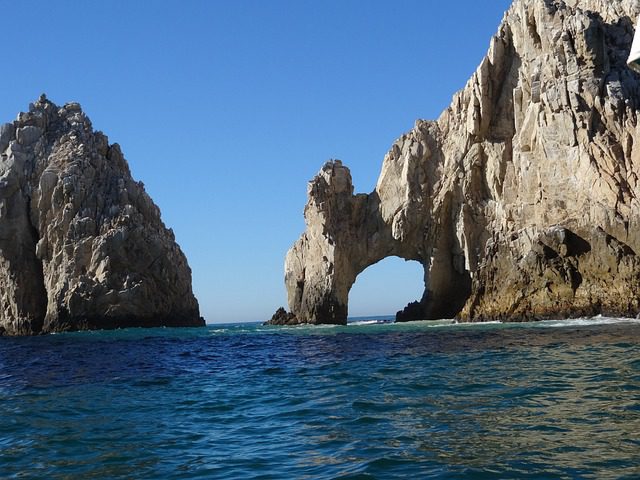
Whale watching in Los Cabos
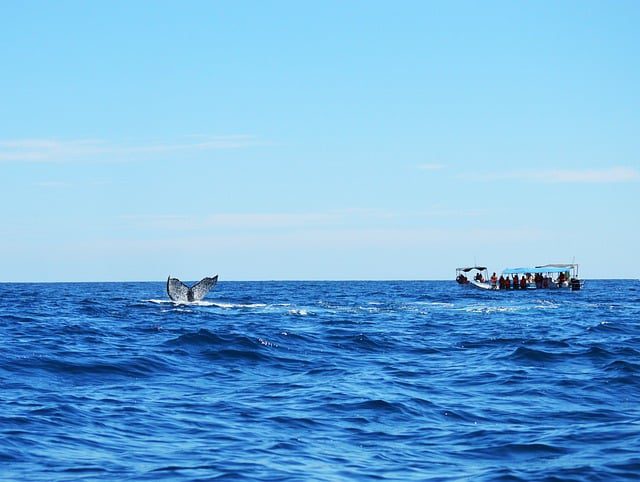
Cancun
Cancun [kan-KOON] is the chief resort. Very popular beach destination among university students during spring break.
Cancun Bridge Panoramic
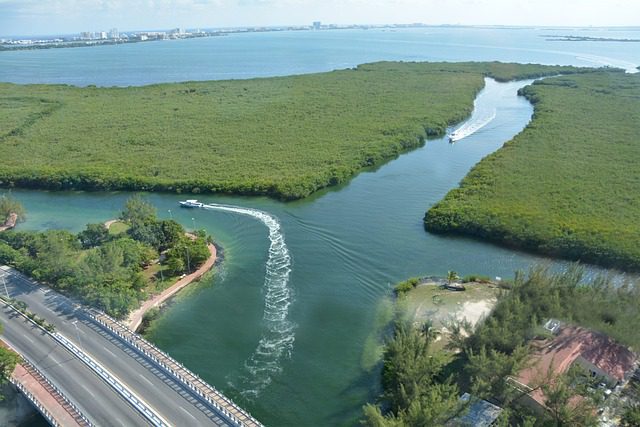
Tulum: Noted for its ruins of Maya Civilization

Acapulco
Acapulco: South of Mexico City, is a major seaport in the state of Guerrero on the Pacific Coast of Mexico.
Cliff Divers in Acapulco
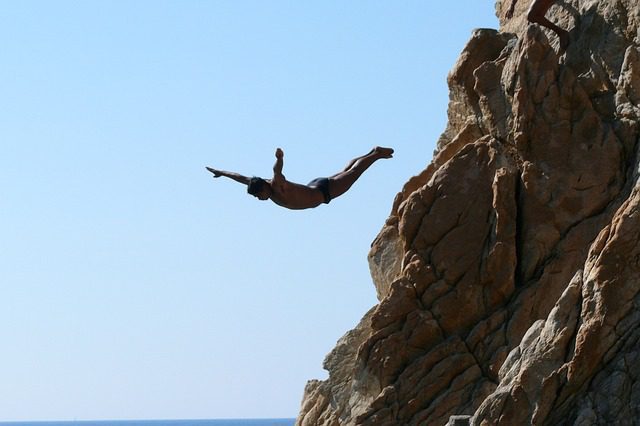
Cozumel
Cozumel [kosu mel] is an island and municipality in the Caribbean Sea off the eastern coast of the Yucatan Peninsula
- Part of the State of Quintana Roo, Mexico
- The economy of Cozumel is based on tourism
Popular activities:
- balnearios
- scuba diving
- snorkeling
Cozumel Island: Has gorgeous beaches and is a stopover for cruise ships!

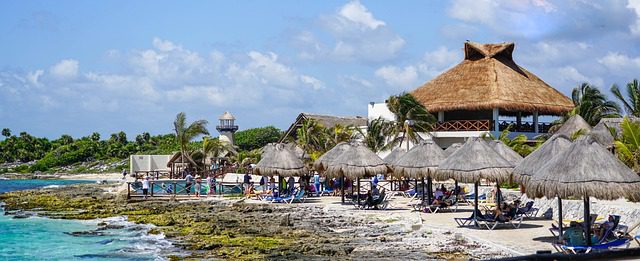
Mexico’s Colonial Regions:
Guadalajara, Cuernavaca, Taxco de Alarcon [TAS-ko], & Mexico City
View overlooking Taxco

8. The Archaeological Ruins
Hidalgo, Mexico
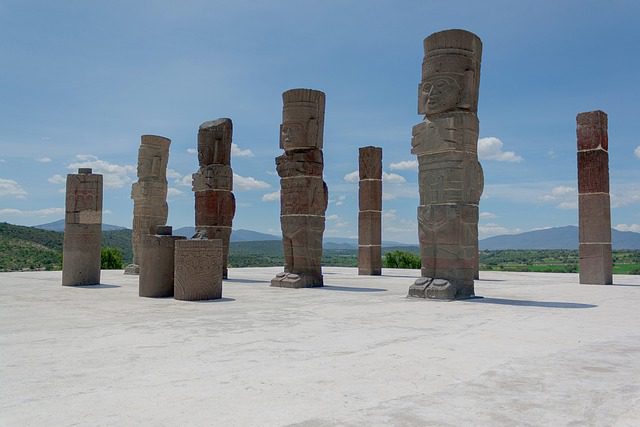
Teotihuacan – Aztec Ruins

Chichen Itza
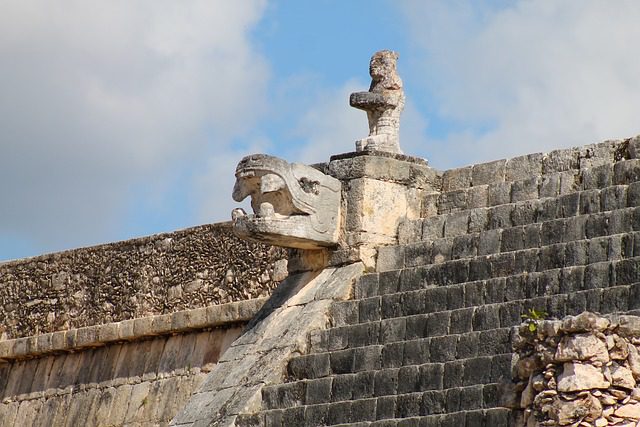
9. Travel Advisory – Canadian & U.S. Governments
https://travel.gc.ca/destinations/mexico
10. How Travellers Get There
Aeromexico (AM), the country’s national carrier, and its partners fly out of several Canadian gateways. Many Canadian, U.S. carriers, as well as charter companies, fly into Mexico.
Principal Airports: Mexico City, Acapulco, Puerto Vallarta, Ixtapa/Zihuatanejo and Cancun.
Flying Time: Toronto to Mexico City – 5 hours; Toronto to Cancun is 4 hours
11. Weather Patterns
Most people believe that Mexico is hot and humid.
- Mexico City sits on a plateau. The city is sometimes warm though rainy at times in the summer.
- Mexico City is cool in the winter. Average daytime high of around 16 degrees Celsius in December.
- The beach cities are hot and humid in the summer and early fall.
- Winter is warm and dry.
- Along the Baja Peninsula and the Gulf of California, winter air and water temperature can be chilly.
12. Getting Around in Mexico
- It is best to fly from one place to another.
- Fly everywhere except to The Copper Canyon. Take a train ride – El Chepe – The Copper Canyon Train.
- Several tour companies operate motorcoach trips between major beach resorts and Mexico City.
- There’s a major subway in Mexico City.
- Taxis are always an option.
- Always negotiate the taxi fare in advance especially if the driver has no meter.
13. Cultural Patterns
- The Mexican culture reflects the complexity of the country’s history through the blending of indigenous cultures and the culture of Spain during Spain’s 300-year colonial rule of Mexico.
- The custom of mañana [maˈnjɑːnə] (putting off a task until tomorrow) persists.
- Doing business during a long, extended lunch is still popular.
- It is customary to bring a small gift if visiting the home of a local.
- Starting times for parties are rarely observed.
- The price of almost anything is negotiable, especially souvenirs.
14. Possible Concerns
- Conflicts between Mexican drug cartels and government forces
- Avoid “Montezuma’s Revenge”
- No knowledge of the Spanish language
- Poverty is a problem. Therefore the crime rate is high
- Mexican food is very diversified
15. Interesting People of Mexico’s Population
Mexican Man & Woman
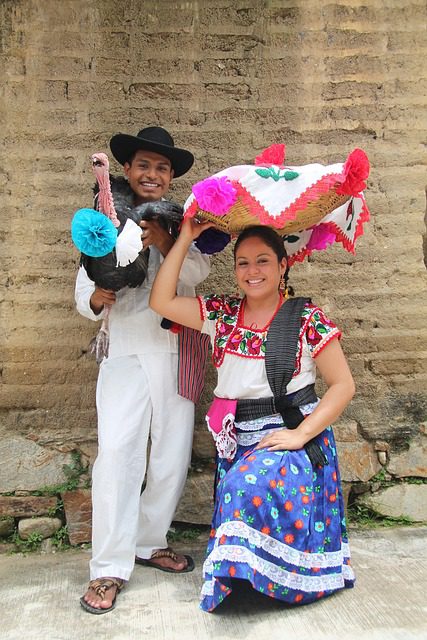
Indigenous Woman of Mexico

Indigenous Woman – Oxaca
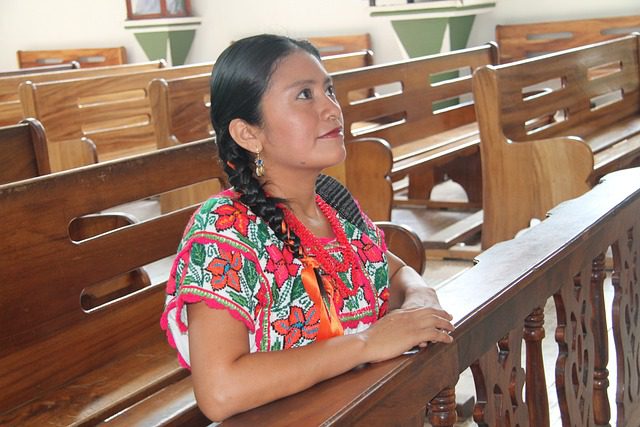
Indigenous girl

Little Girl – Chatina
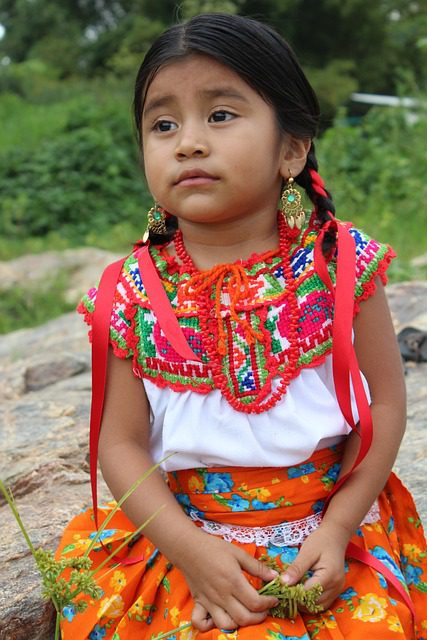
Field Hand

Festival Dancers

Folk Dancers
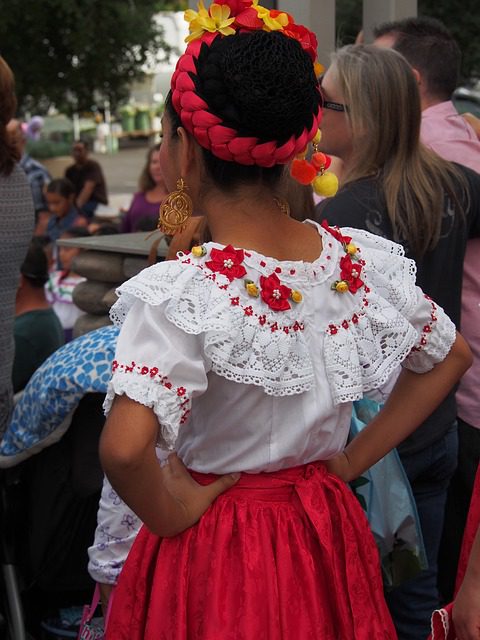
Mexican Dancers
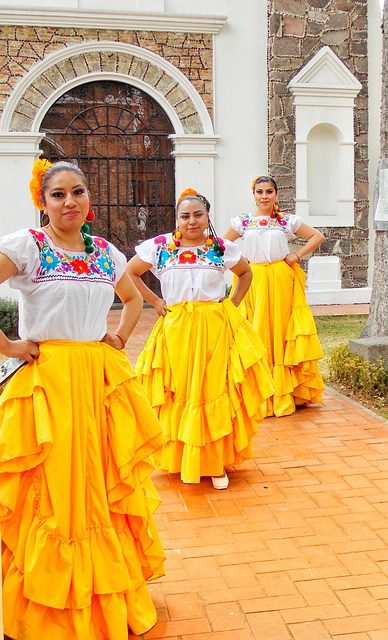
Woman from Chiapas

Indigenous Woman – Oaxaca
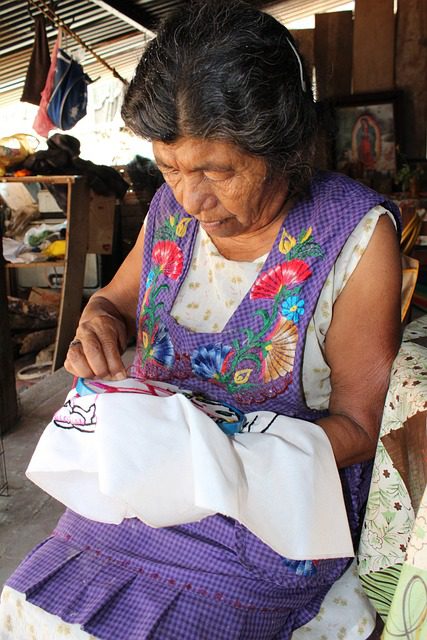
Mariachi
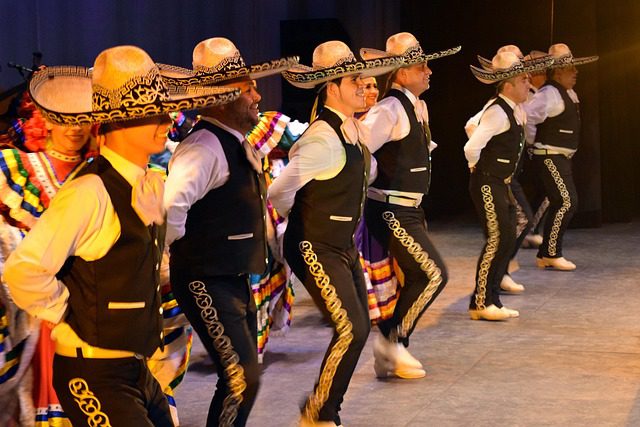
Mariachi – Boy

Mexican Cowboys
